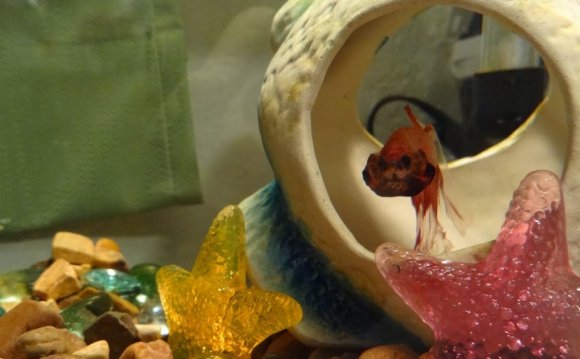
 I’ve been on here a while now, and in discussions I often come across the topic of female betta sororities. I myself, found this idea very clever and fascinating and decided to give it a go. It turned out to be a great success for me. Therefore, I figured I would share my tips and knowledge on the subject of betta sororities.
I’ve been on here a while now, and in discussions I often come across the topic of female betta sororities. I myself, found this idea very clever and fascinating and decided to give it a go. It turned out to be a great success for me. Therefore, I figured I would share my tips and knowledge on the subject of betta sororities.
Introduction
For those of you that are not familiar on the subject, a betta sorority is a tank that holds a group of female betta fish. Although this seems like a brilliant idea; you can house multiple pretty fish in one tank, it can also turn out to be a disaster.
Housing Requirements
I know this seems like a given, but it can be a very vital step to making sure your sorority goes as planned.
- The tank must be a minimum of 10 gallons. It can always be bigger, but not smaller. If you house the bettas in a smaller space, there won’t be enough room for them to establish their own territory. This can lead to more fights, stress, and can eventually lead to death. It is also ideal that your tank is wider rather than taller, this gives them more space to spread out and more room to swim/get away from a bully.
- Make sure you give them as much cover as you can. Whether this be foliage, driftwood, rocks, etc. This gives the fish an easier time to escape from a bully. If they can lose them in the cover, then there won’t be as much fighting.
Adding the Bettas
Hooray! You’ve got everything prepared and you’ve hit a home-run, right? Nope! Choosing the bettas is a crucial step to how well this sorority will get along. One bad betta can be a disaster.
- You must have a minimum of 4 bettas. The more the better. Any less could lead to bullying the weakest betta, which could result in death. (Also, have no more than 6 bettas in a 10 gallon tank. Too many in a small space is a bad idea.)
- A tip that not everyone knows: Females have an ovipositor on their belly, which is a white speck. If you find your female does not have this, it is probably a male. Make sure you don’t mistake a male betta with short fins for a female!
- If you can, when choosing your females, pick ones that were beside each other when in their cups. They may show less aggression towards another because they are familiar faces.
 As well, if buying from a breeder, pick bettas from the same spawn. Siblings tend to get along better.
As well, if buying from a breeder, pick bettas from the same spawn. Siblings tend to get along better. - Choose the youngest females if you can. The younger ones tend to show less aggression, which is always valuable in a sorority.
- Pick out ones that have different colours! I know you probably already thought of this, but it is important! Bettas that look the same tend to be more aggressive to one another, so make sure they are all noticeably different. I know you may see a slight “tinge of red” in this blue betta’s fin, but trust me, the other blue fish won’t care.
- Once you are ready to add them to the tank, make sure you acclimate them all at once. By doing this, it doesn’t make any of them think it was their territory first and fight off the others. Release them into the tank at the same time!
Aggression in the tank
Once you add the fish, this is when you find out if this is going to be a great idea or a terrible one.
- You will probably see some flaring, body slapping, chasing and nipping, which are all normal. They need to do this to figure out the “pecking order, ” which is essentially the order of alpha female to, well, least dominant female.
- If you see too much aggression between two bettas, or even too much aggression given off by one betta, you need to separate the one for about 10 minutes. Then put it back in the tank to see if its behaviour changes. Too much aggression consists of constant fights, unending chasing, and damaging bites. If it persists, you must think of re-homing your betta to another tank or returning it to the pet store or breeder, if possible.
- Mild aggression to figure out the pecking order can continue up to about a week or a few days. Occasional flaring and chasing in the tank afterwards is normal.









